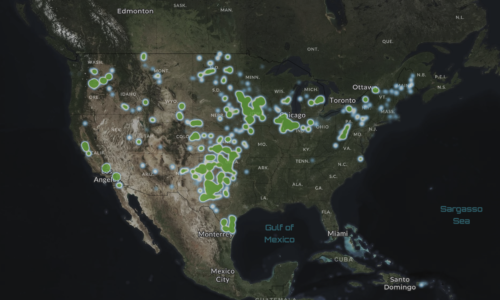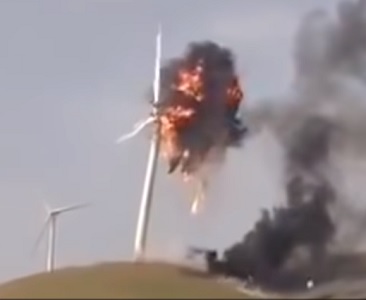Despite an explosion in installed wind capacity since 1990, wind power had achieved just 0.39% of the world’s total energy consumption as of 2013.
While most of a turbine can be recycled or find a second life on another wind farm, researchers estimate the U.S. will have more than 720,000 tons of blade material to dispose of over the next 20 years, a figure that doesn’t include newer, taller, higher-capacity versions. As the average life of a wind turbine is currently 20 years and there are over 60,000 wind turbines – that’s a lot of waste. Blades are around 135-ft. Although the blades of wind turbines appear to move quite slowly to the human eye, blade tips often move at speeds faster than 100 mph.
The big wind turbines kill hundreds of thousands of birds, bats, eagles, hawks and anything that hits the blades. The Audubon Society estimates that wind turbines kill 140,000 to 328,000 birds each year in North America. During nighttime, the blades are hardly visible, and if the birds happen to hit the blades, then due to the high RPM of the blades, they hurt their wings, thus falling to their death. Although, many tall buildings and towers can also cause their death, the fact that the blades are a moving part increase the chances of causing death. Eagles are especially vulnerable as their habit is usually the type selected for wind farms.
For example, scientists have asserted that wind turbines are now the leading cause of multiple mortality events in bats, with 3 to 5 million bats killed by wind turbines every year. Migratory bats in North America may face the risk of extinction in the next few decades due to wind turbine-related fatalities. Frick et al., 2017
“Large numbers of migratory bats are killed every year at wind energy facilities. … Using expert elicitation and population projection models, we show that mortality from wind turbines may drastically reduce population size and increase the risk of extinction. For example, the hoary bat population could decline by as much as 90% in the next 50 years if the initial population size is near 2.5 million bats and annual population growth rate is similar to rates estimated for other bat species (λ = 1.01). Our results suggest that wind energy development may pose a substantial threat to migratory bats in North America.”

A typical wind turbine contains more than 8,000 different components, many of which are made from steel, cast iron, and concrete. One such component are magnets made from neodymium and dysprosium, rare earth minerals mined almost exclusively in China.
Unfortunately, given federal regulations in the U.S. that restrict rare earth mineral development and China’s poor record of environmental stewardship, the process of extracting these minerals imposes wretched environmental and public health impacts on local communities. It’s a story Big Wind doesn’t want you to hear.
In a new paper entitled “Unsustainable Wind Turbine Blade Disposal Practices in the United States”, Ramirez-Tejeda et al. (2017) further detail the imminent and unresolved nightmare of wind turbine blade disposal.
Their research indicates that there will be 43 million tonnes of blade waste worldwide by 2050 with China possessing 40% of the waste, Europe 25%, the United States 16% and the rest of the world 19%.”
Finding ways to manage the waste from the expected high number of wind turbine blades in need of disposal is crucial to harvest wind energy in a truly sustainable manner. Landfilling is the most cost-effective disposal method in the United States, but it imposes significant environmental impacts. Thermal, mechanical, and chemical processes allow for some energy and/or material recovery, but they also carry potential negative externalities. (Great article here.)
The environmental consequences and health risks are so adverse that the authors warn that if the public learns of this rapidly burgeoning problem, they may be less inclined to favor wind power expansion. Advocates of wind power are said to be “largely ignoring the issue”.
It’s an “issue” that will not be going away any time soon.
From a Tweet by patrick Moore, co-founder of Greenpeace:
Perhaps @ExxonMobil hasn’t heard that wind turbines kill 573,000 birds, including 83,000 raptors, & 888,000 bats every year in the US alone (Smithsonian).
